Vulnerability as a Norm for Catalysts
Sanley didn’t know where she could show vulnerability. She is the head of a global consulting agency and a powerful Catalyst – helping organizations transform their cultures to be more aligned with their purposes and values. Late last year she was traveling for 5 months straight: working with clients during the day, checking in with her team of consultants in the evening, then catching up on email late at night. She would get to bed at midnight then get up at 5AM – rinse and repeat. Even she didn’t know where her energy was coming from. She came to see that even though it looked as if she was keeping it together, things were slipping. And one day she realized she’d left most of her clothes at a hotel!
Shutting down.
In the drive for productivity Sanley had begun to shut down, had numbed herself to what was vital and alive, no longer able to really tune into herself and her needs, and also less capable of really tuning into her clients’ needs.
What was missing? Sanley needed to be allowed to be a hot mess somewhere! She needed a safe space to be completely vulnerable and honest! She needed to be able to admit how she was feeling and what she needed. This was a life changing moment for Sanley. She began to play with ways to be vulnerable while on the road – journaling to stay in touch with her emotions during busy times, finding a weekly mastermind group where she could safely share what was happening without losing credibility with clients or colleagues and eventually making the choice not to travel for extended periods.
As Catalysts, we drive hard; therefore, we all need spaces and a practice that allow us to be vulnerable. And if we don’t, we suffer! And our ability to create positive change suffers!
If we don’t take the time to check in with ourselves and allow ourselves to be vulnerable, we clip our wings as a Catalyst.
Here are some things to keep in mind as you consider building vulnerability as a norm in your life:
1. Intentional Vulnerability To Drive Change is Different Than Allowing Space for Your Personal Vulnerability
As Catalysts we often leverage vulnerability to help others get in touch with their vulnerability… to catalyze change and bring energy. That is not the same thing as being vulnerable. For Sanley, she was able to share stories about herself with her clients which is a type of vulnerability, but she was not able to fully be present because she was disconnected from her own needs.
2. Everyone has their own vulnerability index.
Vulnerability doesn’t look the same for everyone. Within an organization or community we can sense the level of vulnerability that is appropriate. And this same index exists within each one of us. The level that is right for you will align to how open or closed you are. You don’t have to be on the ground in tears to be vulnerable. You have a level and expression that is right for you. Know where you sit in order to titrate your vulnerability expressions. If you are not in touch with your vulnerability index you may be experiencing ways of being vulnerable that are not productive. You may give too much or too little. You may overwhelm people. Experiment with being honest about what is happening for you and figure out the right level for you.
3. Build Your Vulnerability Practice.
Inviting vulnerability into your life as a norm doesn’t mean you have to share with all the people around you. Like Sanley you want to experiment with the right places to share and the best practices for you. Some approaches you could try include: journaling as a place to express emotions and frustrations; being part of a group where you all share what is happening such as a mastermind group of people in other companies; a nightly walk or run where you talk to yourself about how you are feeling and what you might need. Your practice will be unique to you, and might be a combination of activities.
As Catalysts we need to be prepared to hold a lot of space and create vulnerability for others. To do that as powerfully as possible, ensuring we have practices, time and spaces to be vulnerable ourselves is essential!
Authors: Ally Taylor, Ann Rich, Ashley Munday, Breana Teubner, Brett Christenson, Enrique Aznar, Gayatri Agnew, Izabel Loinaz, Jay Hasbrouck, Rosie Slentz, Ryan Warren, Sam Ladner, Shannon Lucas, Tahni Candelaria, Tracey Lovejoy

